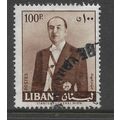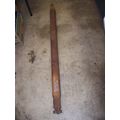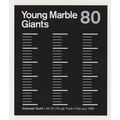Stevens Klah, Fred - Navajo sand painting - Horniman museum art postcard
- Condition : Used
- Dispatch : 2 Days
- Brand : None
- ID# : 44547020
- Quantity : 1 item
- Views : 1196
- Location : United Kingdom

- Seller : justthebook (+1703)
- Barcode : None
- Start : Sun 05 Jun 2011 18:15:48 (EDT)
- Close : Run Until Sold
- Remain : Run Until Sold
Checks/Cheques
 for 1 item(s) edit
for 1 item(s) edit
Shipping Calculator
More Listings from This Seller view all
Seller's Description
- Art Postcard
- Work of art title: Navajo sandpainting, made in situ at the Horniman Museum, 1966 from sandstone and charcoal powdes by Navajo heritary medicine man
- Artist (if known): Fred Stevens Klah
- Media or other details: sand and charcoal
- Publisher / Gallery: Horniman Museum, London
- Postally used: no
- Stamp & postmark details (if relevant): n/a
- Size: Normal
- Notes & condition details: nearly as new
NOTES:
Size: 'Modern' is usually around 6in x 4in or larger / 'Old Standard' is usually around 5½in x 3½in. Larger sizes mentioned, but if you need to know the exact size please ask as this can vary.
All postcards are not totally new and are pre-owned. It's inevitable that older cards may show signs of ageing and use, particularly if sent through the post. Any faults other than normal ageing are noted.
Stock No.: A137
------------------------------------------------
Postage & Packing:
UK (incl. IOM, CI & BFPO): 99p
Europe: £1.60
Rest of world (inc. USA etc): £2.75
No additional charges for more than one postcard. You can buy as many postcards from me as you like and you will just pay the fee above once. (If buying postcards with other things such as books, please contact or wait for invoice before paying).
Payment Methods:
UK - PayPal, Cheque (from UK bank) or postal order
Outside UK: PayPal or Google Checkout ONLY please. NO non-UK currency checks or money orders (sorry).
NOTE: All postcards are sent in brand new stiffened envelopes which I have bought for the task. These are specially made to protect postcards and you may be able to re-use them. In addition there are other costs to sending so the above charge is not just for the stamp!
----------------------------------------------
Text from the free encyclopedia WIKIPEDIA may appear below to give a little background information:
*************
In the sandpainting of southwestern Native Americans (the most famous of which are the Navajo), the Medicine Man (or Hatalii) paints loosely upon the ground of a hogan, where the ceremony takes place, or on a buckskin or cloth tarpaulin, by letting the colored sands flow through his fingers with control and skill. There are 600 to 1000 different traditional designs for sandpaintings which are known to the Navajo. They do not view the paintings as static objects, but as spiritual, living beings to be treated with great respect. More than 30 different sandpaintings may be associated with one ceremony.
The colors for the painting are usually made with naturally colored sand, crushed gypsum (white), yellow ochre, red sandstone, charcoal, and a mixture of charcoal and gypsum (blue). Brown can be made by mixing red and black; red and white make pink. Other coloring agents include corn meal, flower pollen, or powdered roots and bark.
The paintings are for healing purposes only. Many of them contain images of Yeibicheii (the Holy People). While creating the painting, the medicine man will chant, asking the yeibicheii to come into the painting and help heal the patient.
When the medicine man finishes painting, he checks its accuracy. The order and symmetry of the painting symbolize the harmony which a patient wishes to reestablish in his or her life. The accuracy of a sandpainting is believed to determine its efficacy as a sacred tool. The patient will be asked to sit on the sandpainting as the medicine man proceeds with the healing chant. The sandpainting acts as a portal to attract the spirits and allow them to come and go. Sitting on the sandpainting helps the patient to absorb spiritual power, while in turn the Holy People will absorb the illness and take it away. Afterward, when the sandpainting has done its duty, it is considered to be toxic, since it has absorbed the illness. For this reason, the painting is destroyed. Because of the sacred nature of the ceremonies, the sandpaintings are begun, finished, used, and destroyed within a 12-hour period.
Listing Information
| Listing Type | Gallery Listing |
| Listing ID# | 44547020 |
| Start Time | Sun 05 Jun 2011 18:15:48 (EDT) |
| Close Time | Run Until Sold |
| Starting Bid | Fixed Price (no bidding) |
| Item Condition | Used |
| Bids | 0 |
| Views | 1196 |
| Dispatch Time | 2 Days |
| Quantity | 1 |
| Location | United Kingdom |
| Auto Extend | No |





















